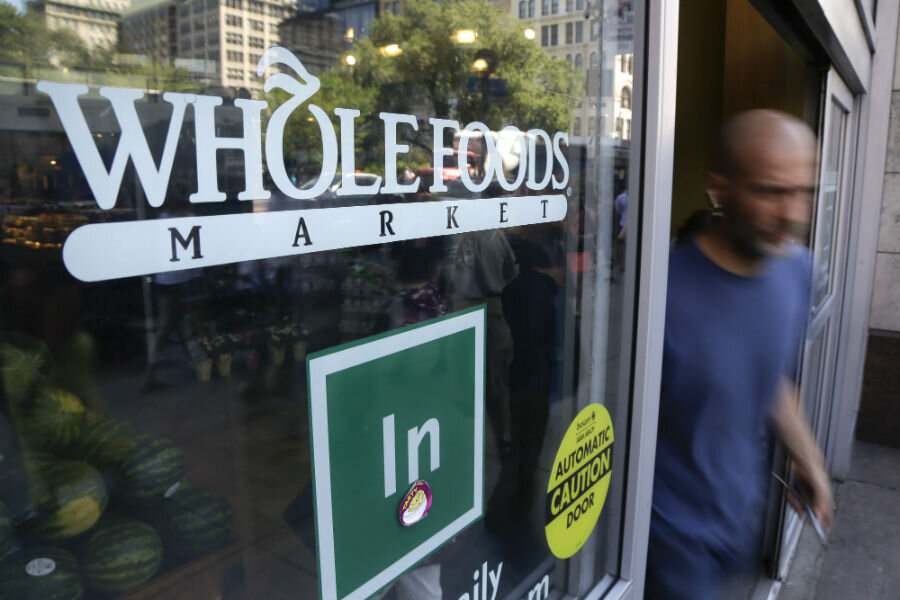With sales down, how will Whole Foods move forward?
Loading...
Whole Foods markets itself as "America's healthiest grocery store," but American shoppers may not agree. The Austin, Texas-based supermarket reported a drop in sales for the fourth straight quarter on Wednesday, amid rising competition for consumers' dinner budgets.
Sales were down 2.6 percent at established locations for the three months ending July 3. So far this quarter, the drop is 2.4 percent.
In an earnings call with reports, co-chief executive Walter Robb put the blame on increased competition. "That's the world we're in, and customers have lots of choices," he said.
Many of those choices are less expensive, perhaps helping to drive shoppers to drive to an alternate grocery store. Some shoppers figure the competition is "good enough," co-chief executive John Mackey said during the call. Others may be drawn to new meal- or ingredient-delivery services, rather than stopping by the store themselves.
Whole Foods has a reputation of being pricey, sparking jokes online about "Whole Paycheck." As mainstream and local supermarkets respond to interest in more natural or organic food, at lower prices, going the extra distance to Whole Foods becomes less appealing for many shoppers. The "Whole Paycheck" perception wasn't alleviated by a New York City probe last year, which found that the chain routinely overcharged city food shoppers, from overstating prepackaged items' weight to adding unnecessary taxes.
To address decreasing sales, Whole Foods is planning on taking a handful of steps, such as pushing more of its 365 house brand products, and a whole new spin-off chain, 365, that also aims to be cheaper. The in-house brand began in 1997, but 365, the stores, have only launched in two locations so far.
The chain, which has a minimalist design (and no meat counter), is priced to compete for young workers' wallets: the type of shopper more drawn to, say, Trader Joe's.
"This is the same company and same set of quality standards," Robb told Bloomberg News in February. "It’s just a fresh new format that I think will allow us to take those standards into markets and communities perhaps that Whole Foods Markets never would have been able to go."
That may mean markets chock-full of Millennials, the generation born roughly between 1980 and 2000. Today, they may be starting out at the bottom of the financial ladder, but building a brand relationship now is essential for companies looking for long-term success, analysts predict.
"Millennials are poised to reshape the economy; their unique experiences will change the ways we buy and sell, forcing companies to examine how they do business for decades to come," Goldman Sachs notes in a report, which also highlights the generation's interest in wellness and exercise.
The 365 stores will have extra oomph to attract young shoppers, such as independent fashion shops, record shops and tattoo parlors that could share the space – businesses Whole Foods calls "Friends" with the tagline, "Their shop. Our store."
The company has also announced it will start selling imperfect produce, which some suggest may lead to increased produce sales. In upscale California and Nevada grocer Raley’s, overall sales of particular fruits and veggies increased when imperfect produce was sold, quieting fears more consumers would pick the cheaper option and drive down sales.
But it may not be enough. To help Whole Foods go forward, the company also plans to cut $300 million in costs, and it is considering a meal-kit delivery program to compete with newly popular services such as Blue Apron.
"There's a lot of people in the Willy Wonka factory working on this," co-chief executive Robb told reporters.
This report contains information from the Associated Press.








